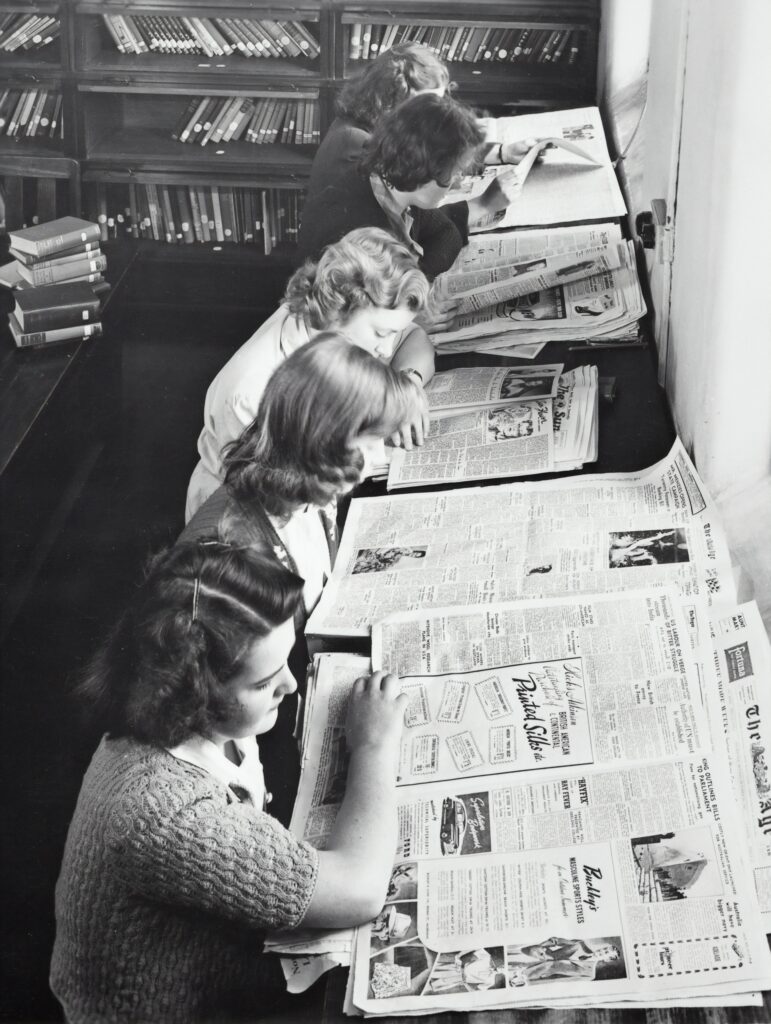The telegraph, the radio, and subsequently televised news, all left their mark. Newspapers have faced competition from every emergent technology, but the printed word lived out a comfortable 20th century right up until the 1990s. It was at this point that it slipped over the edge of a prodigious descent.
Newsrooms around the world have been shrinking for decades, with their digital departments plotting the reverse trajectory. Even the largest international newspapers are heavily reliant on their online presence.
“It’s common to say that the internet broke journalism, but that wouldn’t have happened without the commercialisation of the press, which pegged journalism to advertising revenues,” explains Viktor Pickard, an associate professor at the Annenberg School for Communication at the University of Pennsylvania.

In the United States, newspaper circulation has fallen to about one third of the levels seen 30 years ago.
When readers migrated to the web, advertising revenue for newspapers plummeted, Pickard says. “Since the early 2000s, the newspaper industry has lost over half its employees. Local news media, in particular, has been utterly devastated,” he says.
Editorial staff cutbacks have been a near-constant feature. Last year, during the height of the Covid-19 crisis in the UK, the culling continued; news organisations of all sizes cut another 2000 positions.
Research from 2021 by the Reuters Institute indicates that only 15% of the UK population and 16% of the population of the United States read printed news. For Germany, the figure is 26%, with as much as 46% seen from the Austrian public. News consumption through television is significantly higher; between 60 and 70% for Europe as a whole. These numbers have risen slightly since the start of the health crisis, with the lockdowns and government announcements drawing viewers.

Online news consumption, which in the research also includes that from social media, is far higher than that of printed news. In the UK, 60% of respondents said they get their news online. The highest online news consumption in Europe is seen in Finland and Greece, at 89%.
It is difficult to discern how much of this digital news consumption is via written articles. However, trust in news depending on source indicates that the public have a far higher confidence in news overall than for news encountered on social media.
In the UK, for instance, the public has six times the confidence in news in general, compared to news from social media. In France, respondents have half the level of confidence in social media as a source of news that they have for news overall.
Social media
Social media has clearly had a significant impact on the information diet. Facebook is often cited as a network where people encounter news often, but the research indicates news consumption there is largely incidental. By contrast, Twitter is seen much more as a primary channel for news.
“Twitter is widely used by journalists and politicians and is where the news gets broken first – attracting others with a strong interest in the news,” according to Reuters Institute report.
In general, trust in news has risen to levels seen last in 2018. But there is evidence to suggest that news consumers are becoming more discerning in the wake of the pandemic. Trust in unverified information from social media is down; not surprisingly, people indicate that they prefer to gather information through established and trusted news sources, even online.

What does the future of news look like?
Subscriptions and pay walls will likely become increasingly prevalent, according to industry experts. Three quarters of editors, CEOs, and digital leaders surveyed rated driving digital subscription as important or very important to their organisations’ immediate revenue focus.
At the same time, not everyone cares to understand the world at the level required by deep journalistic analysis — and, as such, they are not willing to spend their time or money on it. Understandably, many people prioritise information closer to home, to the family, or the local club.
Adding to this, a move away from impartial news has been underway for some time. Increasingly, activist publications are voicing strong opinions alongside conventional news reporting. A departure from the neutral, even sterile, stance of newspapers in their mid-century heyday seems highly likely. This could be exacerbated by businesses and venture capital firms with vested interests buying up or even establishing their own news organisations with increasing frequency.
In traditional papers, a newfound need to take a position on issues has also produced some rare editorial decisions. The Washington Post’s “Democracy dies in darkness” tagline, appearing during the presidency of Donald Trump, was one notable example.
Whatever the future holds, readers can be sure that news, either in print or online, is not going to disappear. The business model might need correcting, but news, be it polarising, partisan, or even fact-averse, has plenty life yet.



